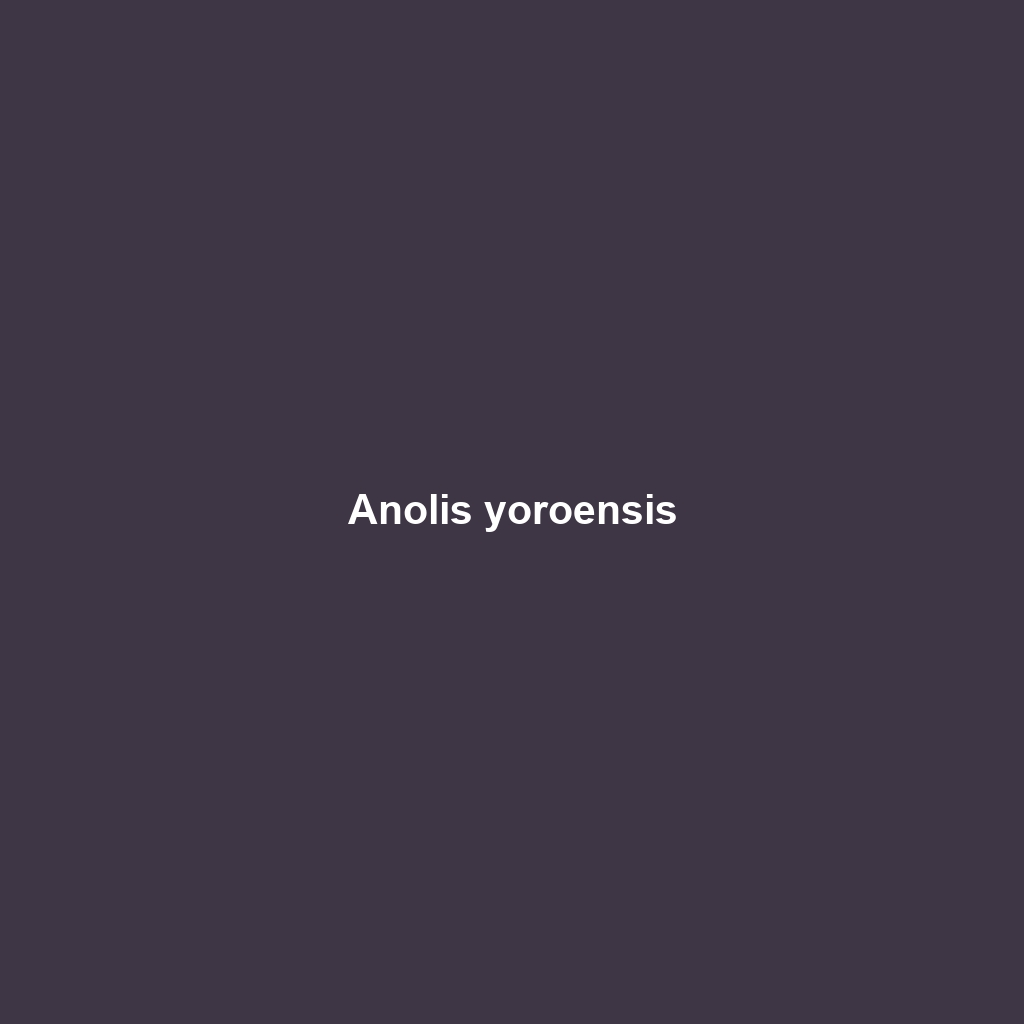Anolis yoroensis Species Description
Common Name: Anolis yoroensis
Scientific Name: Anolis yoroensis
Habitat
Anolis yoroensis, commonly found in the tropical forests of Honduras, is predominantly located in the Yoro Department. This species thrives in humid, lowland rainforests which offer the necessary tree cover and climbing opportunities essential for survival. The warm climate of this region provides a perfect environment for the growth of diverse flora and fauna, making it an ideal habitat for Anolis yoroensis.
Physical Characteristics
This species typically measures between 4 to 6 inches in length, showcasing a slender body structure. Anolis yoroensis exhibits vibrant green coloration with subtle yellow or brown markings, which aids in camouflage among the foliage. Its distinctive feature includes a dewlap, a flap of skin that can be extended, used for communication and mating displays. The unique morphology and coloration make it a visually appealing subject for herpetologists and enthusiasts alike.
Behavior
Anolis yoroensis is highly arboreal, often seen basking on branches or leaves during daylight hours. They display a territorial nature, particularly dominant males who engage in both physical displays and vocal sounds to assert their presence. The species is known for their quick movements, utilizing their climbing skills to escape predators and compete for mates. Their social structure often includes communal living, with several individuals cohabiting in overlapping territories.
Diet
The diet of Anolis yoroensis predominantly consists of small insects and arachnids, such as crickets, ants, and spiders. This insectivorous lifestyle enables them to thrive in their ecological niche, helping control pest populations within their habitat. Adult individuals are adept at hunting, relying on their keen eyesight and quick reflexes to capture prey effectively.
Reproduction
During the breeding season, which typically occurs in the rainy months, male Anolis yoroensis engage in elaborate courtship displays to attract females. Females lay clutches of 1 to 3 eggs in moist, concealed spots within the forest. The incubation period lasts around 6 to 8 weeks before hatchlings emerge, closely resembling miniature adults and capable of independent survival shortly after birth.
Conservation Status
Currently, Anolis yoroensis is classified as vulnerable due to habitat loss stemming from deforestation and agricultural expansion in its native region. Conservation efforts are crucial to ensuring the survival of this species, as its unique habitat is under threat from human activities.
Interesting Facts
One fascinating aspect of Anolis yoroensis is its exceptional ability to change color slightly based on environmental conditions and mood, much like some other anole species. Additionally, they play a role in local folklore, often regarded as symbols of good luck in the communities surrounding their habitat.
Role in Ecosystem
Anolis yoroensis plays an integral role in its ecosystem as both a predator and prey. As insectivores, they help maintain insect populations, thus contributing to the overall health of the forest. Furthermore, they serve as a food source for larger predators, forming a critical part of the food web in their native tropical habitats.
